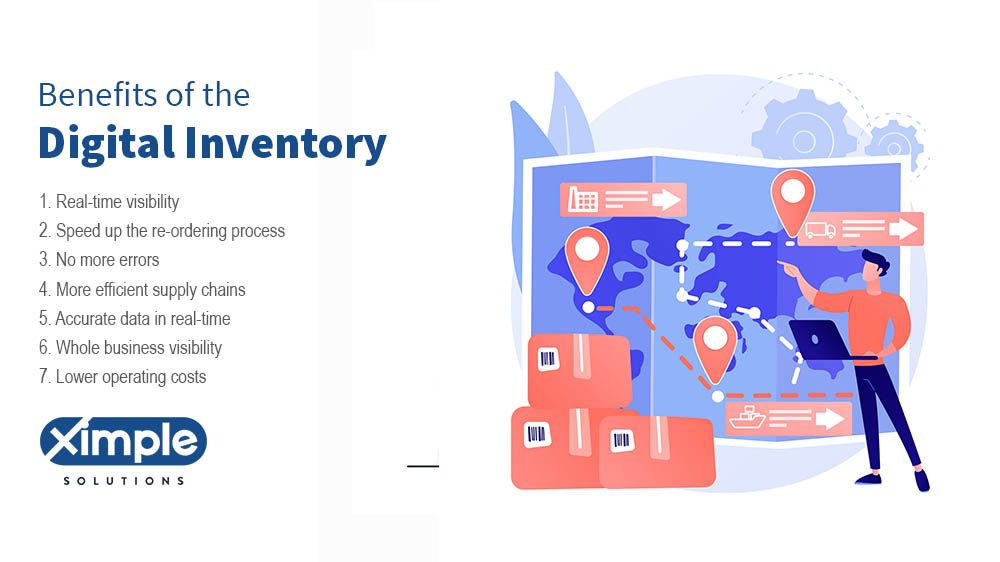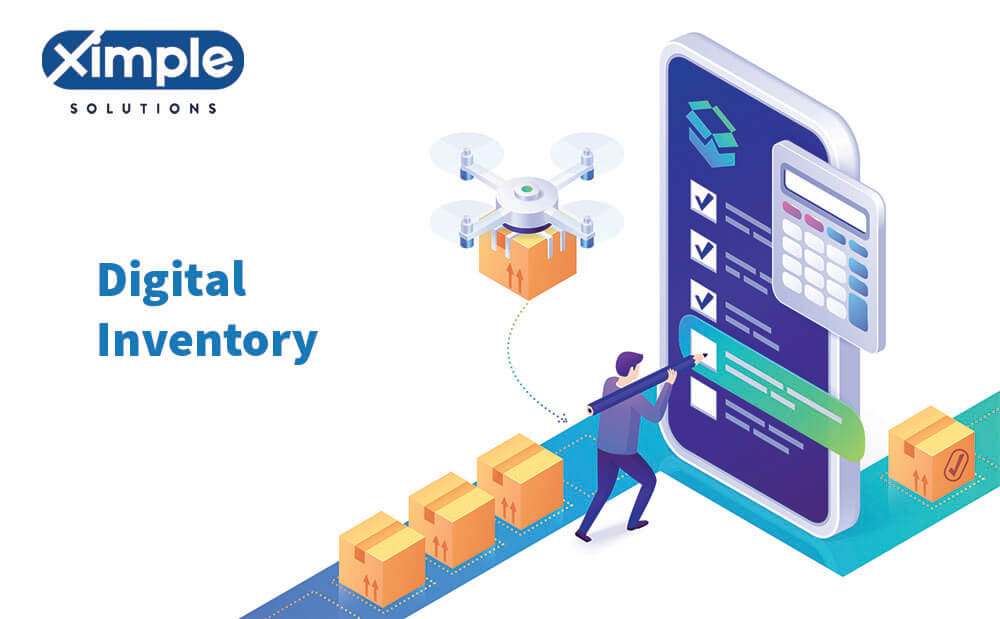Why is Digital Inventory essential to drive up profitability?

This article is relevant for small and medium-sized businesses that are looking to optimize their inventory management processes. The article discusses the importance of digital inventory and the benefits of using inventory management technology, such as real-time visibility, speedier re-ordering, and more efficient supply chains. The article also explores the challenges of digital inventory management, including data loss and security attacks, and provides solutions to mitigate these challenges. Lastly, the article emphasizes the future of digital inventory management and encourages companies to invest in inventory optimization solutions to stay competitive.
As technology for inventory management grows, small and medium-sized businesses should stop relying on traditional techniques. Digital stock management systems work faster and more efficiently than traditional ones. They enable a company to have enough stock to ensure customer satisfaction. Also, managing inventory via digital techniques helps a business invest in just enough units to earn a profit. Digital inventory management ERP Software is the future of all businesses, especially wholesale distributors. We will explain it further in this article guide.

Types of Inventory Management
Accurate inventory control management can help a business set competitive prices, schedule procurement of raw materials, and run non-stop production to refill stock. There are three inventory management methods: manual, periodic, and perpetual.
1. Manual method
This entails a physical inventory management system. Workers directly count items and enter the results in a computer spreadsheet or book. Manual stock-taking is difficult and possible only if a business is small.
2. Periodic method
It suits small businesses with less amount of stock. Unlike in the manual system, workers depend on barcodes and a database showing the stock levels and location. The periodic inventory method estimates interim data before completing a physical stock counting process. Users update stock data once a year.
3. Perpetual method
Medium to large-sized companies prefer to use the perpetual inventory management system because they have to track the movement of many stock units. Unlike the periodic technique, the perpetual method entails constantly updating inventory data. Thus, it provides current stock information and demands fewer physical stock-taking sessions. The perpetual inventory control method allows a company to lower stock and labor costs. An organization using inventory management software, point-of-sale, warehouse management software, and barcodes can comfortably use the perpetual method.
Digital inventory management
Inventory technology has improved so much these days. Inventory tracking systems that provide a clear view of stock movement from the production to the selling point exist. A digital inventory system records data automatically, enabling a business to supervise inventory control.
It can, therefore, simplify decision-making on inventory allocation, stock replenishment, and proper tracking of stock in every distribution center. The use of modern technology to manage inventory makes it possible for a business to sell across different platforms.
While at it, a company can provide consistent customer experiences and reduce inventory carrying costs. There is less risk of accumulating dead stock or overspending as the company can identify the amount of inventory it needs to store to meet the demand.
Traditional Inventory Management
The traditional system captures order placement, shipping, and payment details. Data entry tools entail either spreadsheets or paper. As a result, traditional stock management is a time-consuming manual process that creates room for human error. As it offers less accurate data, the conventional approach to stock management is not reliable.
Inventory Management technologies
Besides lowering human error, labor costs, and workplace injuries, inventory control technologies automate the entire supply chain for better visibility. It entails the following tools:
1. Warehouse management system
WMS is software that consolidates your entire warehousing data into a single platform. It produces real-time reports and statistics, allowing authorized parties to make better inventory management decisions. WMS increases the supply chain visibility, reduces labor costs via automation, and eliminates shipping delays. Choose Enterprise resource planning (ERP) with a WMS module to supervise the whole business.
2. Automated Guided vehicles
AGVs facilitate the storage and retrieval of stock. AGV examples include pallet carts and forklifts. They can load and unload cargo to reduce human labor. Automated Guided Vehicles are a must-have for successful warehousing.
3. Internet of Things
IoT implementation in a warehouse includes things like sensors. These can help check moisture, temperature, and other elements to avoid damage to stock. An IoT system can also help a company combine data from different sources, including ships, vehicles, products, etc. This form of consolidation can help eliminate counterfeiting, spoilage, and theft. IoT technology inventory control can be more reliable in a network that is easy to access if you integrate it with automated software.
4. Automated picking Tools
These are the perfect tools for your busiest distribution centers. They eliminate manual picking by automating the process. They entail tools like ASRS (automated storage and retrieval systems), put-to-light, etc.
Inventory management challenges and solutions in the digitalized world
Without a doubt, the traditional stock management system is no longer sufficient to maintain supply chains. Most companies are taking the digital route. But are there challenges they are likely to face? Despite being the best tools for increasing store visibility, digital management systems have disadvantages. These are:
- Data loss – Digital inventory trackers are computerized systems relying on hard drives and electricity. If there is a power outage or a computer hard drive fails, data loss can occur. Thus, companies digitalizing their inventory control systems should back up their data regularly.
- Security attacks – Cyber criminals would do anything to access a company’s sales and financial data. This data is gold, as there are so many ways to use it to sabotage the company’s operations. Thus, companies should use robust antivirus software tools and keep their firewalls up-to-date.
- Fewer physical stock counting sessions – Automated tools simplify work and produce error-free and more reliable data forecasts. However, computers may not record every damaged or spoilt item. Workers may also get a chance to steal things and manipulate the computer database to cover their steps. Hence, companies using automated inventory management should continue to audit their inventories physically.

Benefits of digital inventory and inventory management technology
The following are the benefits of inventory visibility via automated tools.
- Real-time visibility – Automation allows companies to view the amount of stock remaining across multiple distribution centers in front of a computer dashboard. So, they can avoid shipment delays by identifying items that need refilling and discontinuing the less profitable ones.
- Speed up the re-ordering process – The demand and supply forces control the market. When customers demand a given item more, a company can re-stock it faster without increasing the cost.
- No more errors – Traditional stock-taking entails paperwork and manual processes that cause human error. On the other hand, digital inventory managers reduce discrepancies between the actual physical stock in storage and that appearing on records. Automated tools provide more accurate and reliable information as they capture live data in real-time.
- More efficient supply chains – Transitioning to a digital inventory system can make your supply chain run more efficiently. You can establish operational phases with complete processes faster with automated systems.
Digital inventory: A competitive edge for wholesale distributors
Information technology inventory management can solve many challenges that wholesalers and distributors face. Automation can offer them these benefits:
- Accurate data in real-time – Automated inventory control programs provide error-free data as things happen. This data can help distributors manage real-time metrics to attain their objectives.
- Whole business visibility – Distributors want to manage their stock in real-time and do much more. An ERP program can provide a 360-degree view of your business because it entails inventory management functions, accounting, finance, procurement, supply chain management, customer relationships management, etc.
- Lower operating costs – We have cloud-based software tools, including cloud ERP, which distributors do not have to maintain directly. Providers of cloud computing solutions incur infrastructure maintenance and upgrading fees.
Digital Inventory System FutureÂ
As of now, digital transformation is taking over the retail supply chain industry. More and more companies are shifting from traditional inventory administration to real-time inventory visibility systems. As technologies around software and computers advance, we expect more advanced stock management solutions to crop up.
Soon, businesses of all sizes might embrace digital inventory administration techniques and track their products and raw materials from a single dashboard. Inventory apps are already available, and we think there will be more of them in the future as the use of mobile devices increases.
Many more companies will install a Warehouse Management System and connect it to their digital inventory management software. Others will prefer cloud ERP as it has all business management modules.
Conclusion
In today’s digital world, digital inventory management is essential for businesses to thrive and gain a competitive edge. Traditional inventory management methods are outdated and unreliable, while digital inventory management systems are faster, more efficient, and provide real-time visibility. The benefits of digital inventory management include real-time visibility, more efficient supply chains, lower operating costs, and more accurate data. Although digital inventory management systems have their challenges, companies that invest in them can improve productivity, lower costs, and gain a competitive edge. As technology advances, we can expect even more advanced inventory management solutions to emerge in the future.






